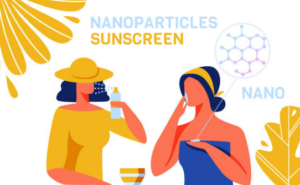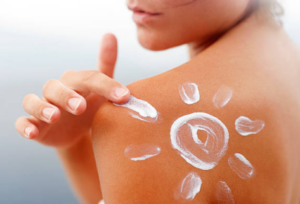The Great Sunscreen Debate

Sunscreen is a crucial step in protecting our skin from the harmful effects of the sun’s UV rays. However, with the myriad of options available on the market, it’s easy to feel overwhelmed, especially when faced with the ongoing debate between mineral and chemical filters.
In this comprehensive guide, we’ll delve into the science behind both types of sunscreen filters, examine their potential benefits and drawbacks, and ultimately, help you make an informed decision about which option is safer for you and your loved ones. Let’s unravel the great sunscreen debate and shed light on the truth behind mineral and chemical filters.
Understanding Sunscreen Filters
Before we dive into the comparison between mineral and chemical filters, let’s first understand how each type works to protect our skin from the sun’s rays.
- Mineral Filters:
Mineral filters, also known as physical or inorganic filters, rely on the reflective properties of natural minerals like zinc oxide and titanium dioxide to protect the skin from UV radiation. Here’s a closer look at how they work:
Reflective Action: Zinc oxide and titanium dioxide create a physical barrier on the skin’s surface, reflecting and scattering UV rays away from the skin. This mechanism is akin to a mirror, where the minerals bounce the incoming UV radiation back into the environment, preventing it from penetrating the skin and causing damage.
Broad-Spectrum Protection: Mineral filters offer broad-spectrum protection against both UVA and UVB rays, making them highly effective at preventing sunburn, premature aging, and skin cancer. Unlike some chemical filters, which may only protect against one type of UV radiation, mineral filters provide comprehensive coverage.
Photostability: One of the advantages of mineral filters is their photostability, meaning they do not degrade when exposed to sunlight. Zinc oxide and titanium dioxide remain effective over time, providing reliable sun protection even after prolonged sun exposure.
Non-Allergenic and Non-Irritating: Mineral filters are less likely to cause allergic reactions or skin irritation compared to chemical filters, making them suitable for individuals with sensitive skin or conditions like eczema. Their gentle formulation ensures that they can be used safely on all skin types, including babies and those with reactive skin.
- Chemical Filters:
Chemical filters, also known as organic filters, contain synthetic compounds like avobenzone, octinoxate, oxybenzone, and octocrylene, which absorb UV radiation and convert it into heat. Here’s how they function:
Absorption Process: Chemical filters penetrate the skin’s surface and absorb UV rays, converting them into lower-energy forms of radiation, such as heat. This process occurs within the skin’s layers, where the chemical compounds interact with UV radiation and dissipate its energy before it can cause cellular damage.
Specificity of Protection: Chemical filters may offer varying degrees of protection against different types of UV radiation. For example, avobenzone is primarily effective against UVA rays, while octinoxate and oxybenzone primarily absorb UVB rays. Formulations containing multiple chemical filters may provide broader coverage against both UVA and UVB radiation.
Potential for Irritation: Some individuals may experience skin irritation or allergic reactions when using chemical sunscreens, particularly if they have sensitive skin or are prone to skin conditions like rosacea or contact dermatitis. Chemical filters can sometimes cause stinging, burning, or redness upon application, although these effects are typically temporary.
Photodegradation Concerns: Chemical filters are susceptible to photodegradation, meaning they can break down when exposed to sunlight. This degradation can lead to decreased efficacy and potential health risks, as some chemical compounds may produce reactive by-products or free radicals when they degrade, which could damage DNA and contribute to skin aging or cancer.

The Safety Debate: Mineral vs. Chemical Filters
- Safety of Mineral Filters:
Mineral filters, composed of zinc oxide and titanium dioxide, are often celebrated for their natural ingredients and gentle approach to sun protection. Here’s a closer look at their safety profile:
Non-Irritating Formulation: One of the primary advantages of mineral filters is their non-irritating formulation, making them suitable for individuals with sensitive skin or conditions like eczema. Unlike chemical filters, which can sometimes cause stinging or burning sensations, mineral sunscreens are well-tolerated by most skin types.
Broad-Spectrum Protection: Zinc oxide and titanium dioxide offer broad-spectrum protection against both UVA and UVB rays. These minerals create a physical barrier on the skin’s surface, reflecting and scattering UV radiation away from the skin, thereby reducing the risk of sunburn, premature aging, and skin cancer.
Stability and Longevity: Mineral filters are known for their stability and longevity, providing reliable sun protection even in harsh environmental conditions. They are less prone to degradation when exposed to sunlight, heat, or moisture, ensuring consistent performance over time.
Reef-Safe Formulation: Zinc oxide and titanium dioxide are considered reef-safe ingredients, making mineral sunscreens a more environmentally friendly option for aquatic ecosystems. Unlike certain chemical filters, which have been linked to coral bleaching and marine ecosystem damage, mineral filters pose minimal risk to marine life.
- Safety of Chemical Filters:
Chemical filters, including compounds like oxybenzone, avobenzone, octinoxate, and octocrylene, have been the subject of growing concern in recent years due to their potential health and environmental impacts. Here are some key considerations regarding their safety:
Hormone Disruption: One of the most significant concerns surrounding chemical filters is their potential to disrupt hormone function in the body. Certain chemicals, such as oxybenzone and octinoxate, have been shown to mimic estrogen, leading to hormonal imbalances and reproductive issues. These effects are particularly concerning for children, adolescents, and pregnant individuals.
Skin Sensitivity: Chemical sunscreens are known to be more likely to cause skin irritation or allergic reactions compared to mineral sunscreens. Some individuals may experience stinging, burning, or redness upon application, especially if they have sensitive skin or conditions like eczema.
Environmental Impact: Chemical filters have been linked to environmental damage, particularly in marine ecosystems. Compounds like oxybenzone and octinoxate have been found to contribute to coral bleaching, DNA damage in coral larvae, and disruption of marine life. As a result, several regions have implemented bans or restrictions on the use of these chemicals in sunscreen formulations.
Photodegradation: Chemical filters are susceptible to photodegradation, meaning they can break down when exposed to sunlight, leading to decreased efficacy and potential health risks. Some studies suggest that certain chemical filters may produce harmful by-products when they degrade, posing additional concerns for human health and the environment.

Navigating the Options
- Skin Sensitivity and Allergies:
- Individuals with sensitive skin or allergies may find that mineral sunscreens are gentler and less likely to cause irritation or allergic reactions. The physical barrier created by mineral filters sits on the skin’s surface, making them less likely to penetrate and trigger skin sensitivities.
- Chemical sunscreens, on the other hand, may contain ingredients that can be more irritating to sensitive skin, such as oxybenzone or avobenzone. Those prone to reactions or with conditions like eczema may prefer mineral options.
- Environmental Concerns:
- Environmental awareness has led to growing concerns about the impact of certain sunscreen ingredients on marine ecosystems, particularly coral reefs. Chemical filters like oxybenzone and octinoxate have been linked to coral bleaching and damage to marine life.
- Mineral filters, specifically zinc oxide and titanium dioxide, are considered reef-safe and pose minimal risk to coral reefs. Choosing mineral sunscreens labeled as reef-friendly can help minimize the environmental impact of sunscreen use during water activities.
- Ease of Application and Texture:
- Chemical sunscreens are often preferred for their lightweight formulations and easy application. They tend to blend more seamlessly into the skin without leaving a white cast, making them ideal for daily wear under makeup or during outdoor activities.
- Mineral sunscreens, while effective, can sometimes be thicker in consistency and leave a noticeable white residue on the skin, especially with higher concentrations of zinc oxide. However, newer formulations have made significant improvements in texture and appearance, offering more cosmetically elegant options.
- Protection and SPF Levels:
- Regardless of whether you choose mineral or chemical sunscreen, it’s essential to select a product with adequate sun protection factor (SPF). The American Academy of Dermatology recommends using a broad-spectrum sunscreen with an SPF of 30 or higher for optimal protection against both UVA and UVB rays.
- Both mineral and chemical sunscreens can provide high levels of SPF protection when used correctly. Look for formulations that offer broad-spectrum coverage and water resistance, especially for extended periods of sun exposure or water activities.
- Personal Preferences and Lifestyle:
- Ultimately, the choice between mineral and chemical sunscreen filters may come down to personal preferences and lifestyle factors. Some individuals may prioritize natural ingredients and environmental sustainability, leaning towards mineral sunscreens.
- Others may prioritize ease of application, texture, and cosmetic appearance, favoring chemical sunscreens for their lightweight feel and seamless blendability. Consider your skin type, outdoor activities, and environmental values when selecting a sunscreen product that aligns with your preferences and lifestyle.

The debate between mineral and chemical sunscreen filters continues to rage on, with proponents on both sides arguing for the safety and efficacy of their chosen option. While mineral filters are praised for their natural ingredients and gentle formulation, chemical filters offer convenience and ease of application.
Ultimately, the safest sunscreen is one that you will use consistently and correctly. Whether you choose mineral or chemical sunscreen, be sure to apply it generously and reapply regularly, especially after swimming or sweating. By prioritizing sun protection and making informed choices about the products we use, we can all enjoy the sun safely and responsibly, without compromising our health or the health of the planet.

